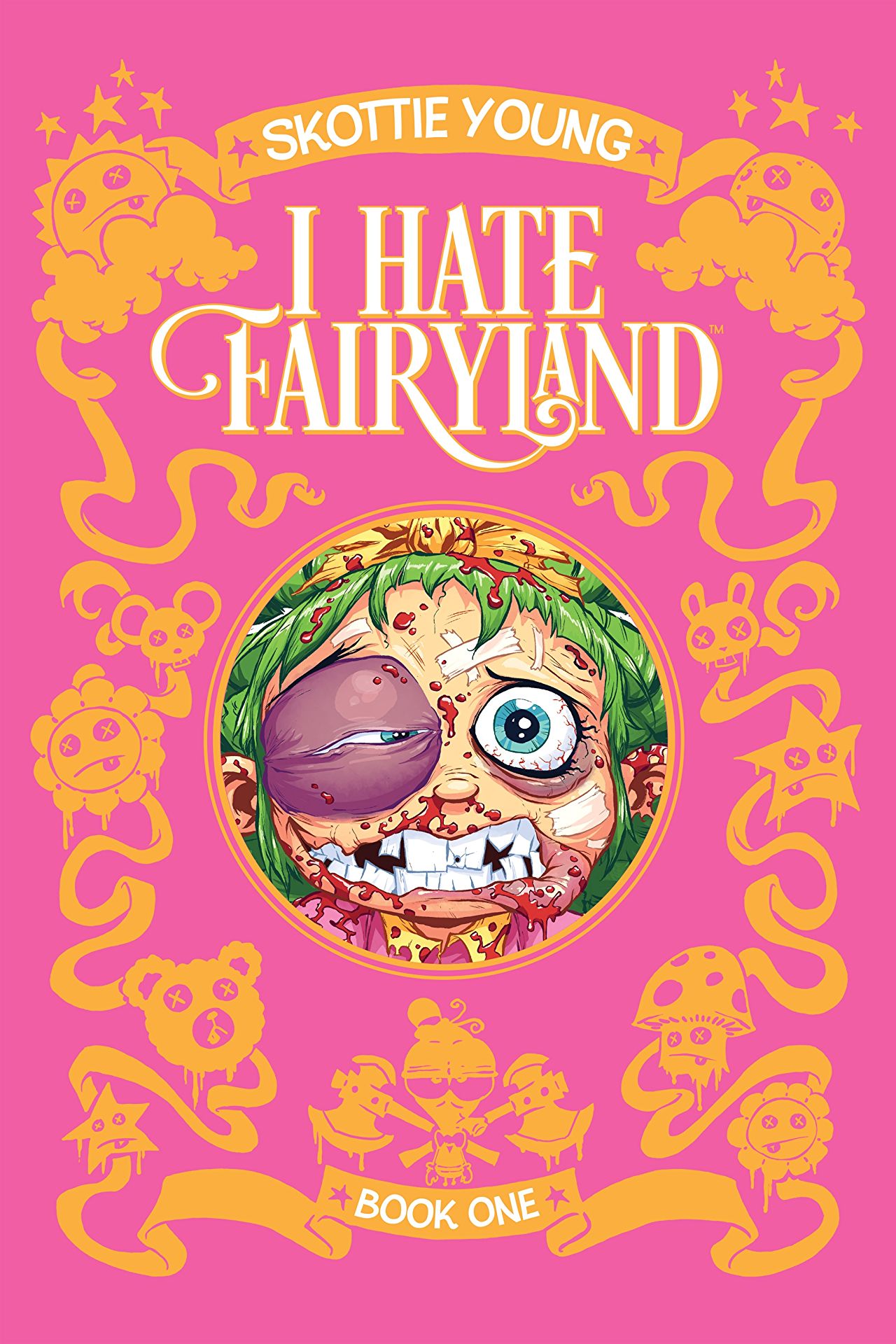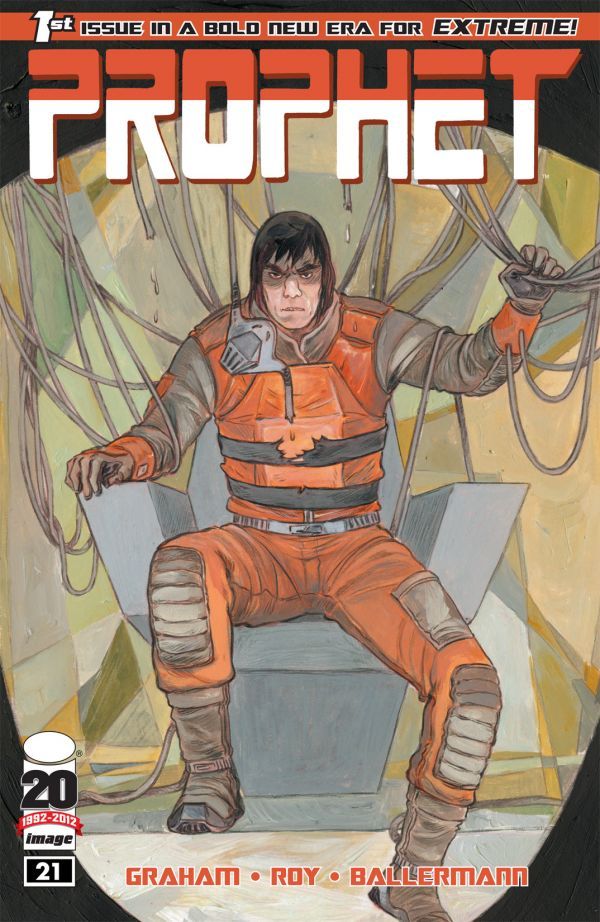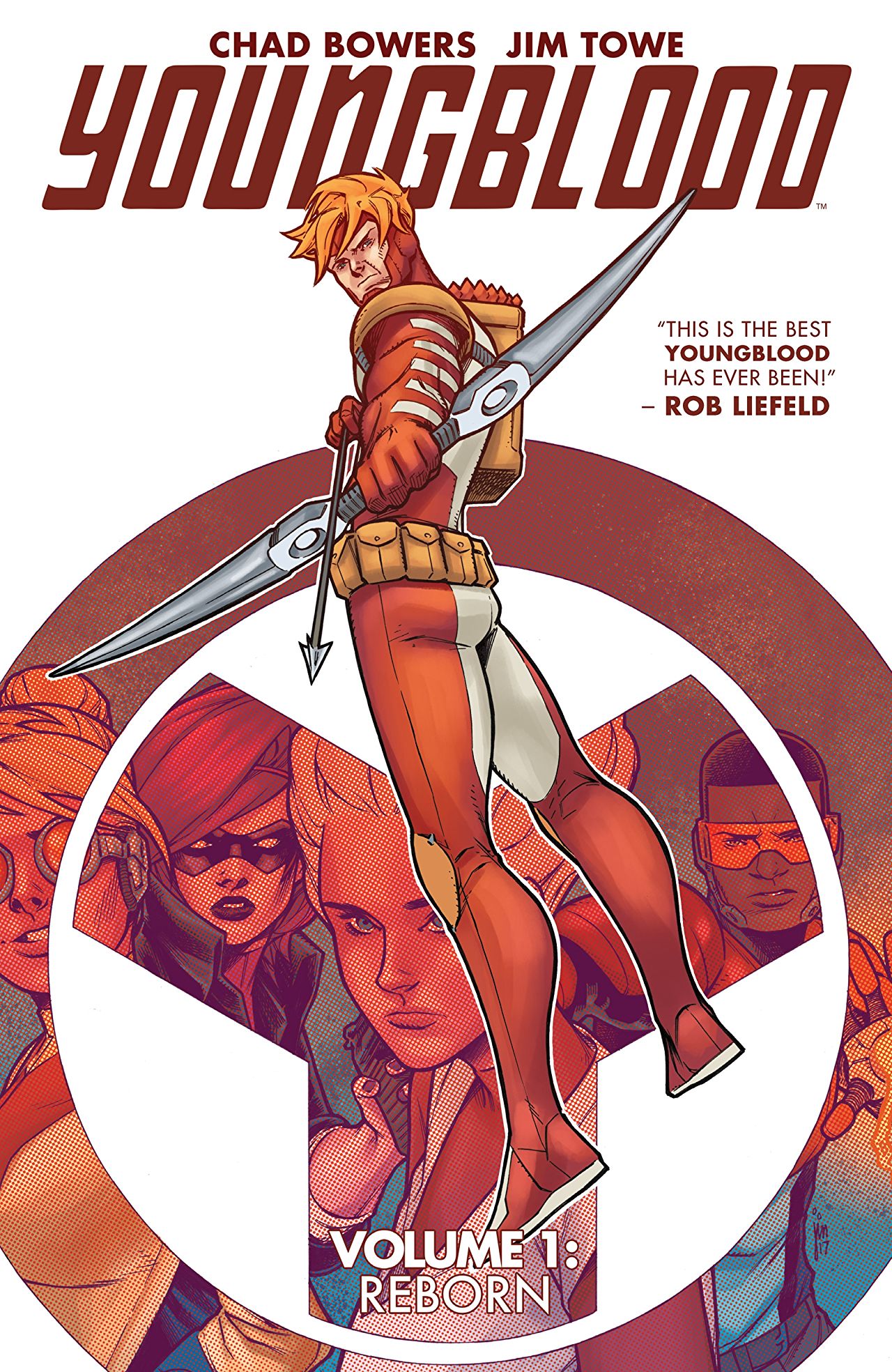For the last 25 years, Rob Liefeld has been a presence in the American comics industry. His kinetic pencil work turned New Mutants into a juggernaut at Marvel that transformed into the era-defining X-Force, inspiring a legion of imitators, an even larger contingent of fans and a vocal group of detractors.
From that success, Liefeld joined with the other superstar artists of the era to form Image Comics, the best-selling independent publisher that is the subject of tonight’s new episode of Robert Kirkman’s Secret History of Comics, by his fellow Image icon. Before the documentary’s debut, Liefeld answered questions about the state of the comics industry, the legacy of Youngblood, creating a children’s book, and the next Image Comics.
On the next Robert Kirkman’s Secret #HistofComics, hear #RobLiefeld talk about censorship, @deadpoolmovie, and the darker side of the comic ‘biz. Monday at 10/9c! pic.twitter.com/oeSPd8QdWh
— AMC (@AMC_TV) December 7, 2017
What’s it been like going back 25 years for the documentary?
The whole year has been a lot of fun. I taped my segments for this a year ago and then we went to Emerald City Comic Con in March to have a reunion panel. For whatever reason it’s not easy to get us all together. It’s been a year of reflection and it’s great. There’s a greater appreciation that comes from reflection but the time is just as exciting.
I gotta be honest, the thing I like the most about the finished episode is that I think it captures the excitement that was happening at the time really well. it lets people know what was happening at the time.
Y’know my nephew is 15 years old, my kids obviously know what was happening at the time, and at Thanksgiving he was asking questions about the Jack Kirby and Stan Lee episode and we were just talking about The Secret History of Comics now that’s giving a glimpse at things, whether it’s Jack and Stan where that’s 60 years plus ago or Milestone 25 years ago and Image 25 years ago.
We’re getting new eyeballs all the time as a business. It’s great to have something that gives details and is intelligent in its retelling and I’ve gotta be honest, not all of them are as honest and researched in their retelling. I think it’s great.
Looking back at your part in Image, what are you proudest of and happiest with as you take a look at the company?
Look, even the producers said that upon interviewing 6 of the 7 interviews, they said there was a consistency in all of it and that was that Image doesn’t happen without me. Let me tell you, flat out, straight up, as factually as I can put it, that’s true.
The greatest perspective I can offer now, is that I get it, I get why the others were hesitant. They had wives, they had family, they had children. I was the young buck and I was fearless because I had nothing to lose and everything to gain. The key component of that was you had to look at where I was coming from.
With all due respect to Todd McFarlane and Jim Lee, their success came on the heels of Spider-Man and the X-Men. They had two of the most popular and enduring characters and franchises and comics. When there were uninspiring creative teams on those books, they still managed to sell well. I was coming from the perspective where Marvel had put me on a book that was a complete dog knowing it was a dog.
They told me, “Rob we’re about to cancel this so you can do whatever you want with this.” I had Boom Boom and Rictor on my table when it all started, but in my second issue of New Mutants, when I introduced Cable and 12 other characters that I brought with me, it was a real announcement that someone new was in the building and the 12 new characters in New Mutants #87, we were off to the races and by the time I had the reins writing where iIcould introduce Deapdool and Domino and Shatterstar and Feral and reveal truths and secrets of Stryfe and add to the MLF and introduce Kane.
My last issue of New Mutants #100 sold 1 million copies and went back to press four times. That is one of my signature achievements. It had no gimmicks, it had no trading cards, it wasn’t a scratch and sniff, it was just content. I had created content with my own visions and characters and watched the fans follow me to the tune of 1 million sales so I was very confident that the next giant project I was going to do I should control that content.
I also want to make it very clear that I knew what I was doing. I figured, maybe this is something I can get away with right now. I’ve got such a rapport with the fans that I can make the jump. Nothing was going to stop me.
I was the perfect candidate because I was young, headstrong, and I was the perfect candidate because I was living in an apartment and I had nothing to lose. I was already doing ridiculously well from Marvel and the month Youngblood #1 launched was when I got the X-Force #1 royalty check so it was funny that as Youngblood was blowing up, my financial rewards from X-Force were arriving. It was a perfect storm because you’ve financially empowered artists to live out their dreams.
We were so competitive. We were iron sharpening iron. I look at today’s NBA stars and, every night, they’re out going up against each other and everyone’s filling up the stat sheet and in the MVP race. That was our class and, honestly, I’ve never seen anything like it since, but we learned from the guys that came before us.

I feel like it died after us. I feel like everyone just wanted to behave and I think it’s kind of boring but I’m always looking for the next Rob or the next Todd. The rabble-rousers. The legacy of the company is the best thing because it offers the option to create and control and own your own content and that is the same option it was 20 years ago, empowering someone like a Robert Kirkman or, more importantly, the guy who most resembles Image comics in spirit and in approach in 2017 is Skottie Young who saw his window; he was “Mister Hot Cover Guy,” who had the top book with Rocket Raccoon and his next step was he launched his own book at Image.
The great thing about I Hate Fairyland is that there is no template for that. He had his own unique, brilliant, original vision and he wanted to control it. He has the amazing hardcover that came out and he made that, he made all those calls. The reason he has gold foil on a hardcover and the reason it’s bright pink, that’s all Skottie’s vision. Image comics was there to empower him and when he decided that his window was open, he went for it.
We were at peak performance when we created Image. The people who did it after us, the people who tried to create Image comics-like consortiums, the reasons those didn’t catch fire is because it was years past their prime or prior to their prime. You know, that old saying, strike while the iron was hot. We struck in that window and we benefitted from it and now guys like Skottie Young are taking advantage.
How do you look at the industry now? You’ve gone back and forth at Image, gone back to Marvel, spent some time at DC, how do you think the industry has changed both for creators and publishers in the last 25 years?
I believe that fear is the biggest presence in the room in the comics industry. It keeps everyone from taking risks. It has certainly contributed to making Marvel and DC stronger. I am not going to be the guy that points the finger at anyone and says you should take more risks. Again, I was single with no commitments. I was young and the perfect free agent.
The truth is Jim [Lee] was making millions off X-Men the way Todd was making millions off Spider-Man and I was making millions off X-Force, but he kept telling us repeatedly in the three months of his deliberations that, “Aw man I’ve got a baby on the way and I’ve got this great insurance with Marvel,” and I remember Todd and I one time simultaneously just going, “You can buy your own insurance! You’re not struggling! You’re going to be financially able to get a beautiful insurance package.”
But given today’s market I get it, I totally understand. I would never cast aspersions to someone committed to being comfortable. Being comfortable is nice. Knowing that paycheck is on the way is the tradeoff for maybe not taking as many risks.
The reckless mindsets were shared between Todd and myself. We were so reckless. I would advise my son to be more conservative if I was my dad, who did advise me to be more conservative. Now I see through his eyes. I just saw the world of licensing and toys.
You gotta understand, before X-force #1 in June of 1991. I have seen the molds of Deadpool, Cable, and Shatterstar because ToyBiz had gone to the Marvel offices and seen my unlettered pages and I later found out that they saw my pages as very toyetic. That’s what big guns and swords will do for you. Deadpool hadn’t been in a comic for three months and he was getting a plastic mold and Cable one year, and Shatterstar less than Deadpool. I saw the world of licensing, anything I could do on my own, big and small, as a realm that I should be immediately interacting with based on where I was at with my career.
We couldn’t be held back. My appetite and my career were such that I had to jump out, I had to at least take that risk. Today’s market is dominated by the Big Two but, I gotta tell you, I couldn’t be prouder of Eric Stephenson, who’s been at the helm of Image comics for just keeping Image as a strong number three and just as Marvel and DC try to knock each other from the top, Eric fends off battles from Boom and Dark Horse and IDW all the time.
The content, the guys that are bringing their content to Image, whether it’s Rick Remender or [Brian K.] Vaughan or Skottie Young following in Kirkman’s footsteps, Eric has curated a great bunch of talent and Image has stayed so ridiculously competitive, it’s wonderful. I feel like were fortunate that image has stayed as successful as it has given that the Big Two are so dominant.
We’re at the point now where there are people who read X-Force and then followed you to Youngblood are writing their own comics and we’ve seen Brandon Graham doing Prophet and Chad Bowers doing Youngblood. What’s it like seeing a new generation of creators taking a hand in your creations?
 Oh my gosh it’s so much fun and I’m very proud to say I don’t screw with their visions. Y’know I didn’t like Daredevil until Frank Miller came on in 1979 and then all of a sudden I was just like, “Where did this kickass comic come from? This is my favorite comic.” and to Marvel’s credit, they just let him be, they just let him do what he wanted. And then I was fortunate on New Mutants, they just let me do what I wanted.
Oh my gosh it’s so much fun and I’m very proud to say I don’t screw with their visions. Y’know I didn’t like Daredevil until Frank Miller came on in 1979 and then all of a sudden I was just like, “Where did this kickass comic come from? This is my favorite comic.” and to Marvel’s credit, they just let him be, they just let him do what he wanted. And then I was fortunate on New Mutants, they just let me do what I wanted.
So when Brandon Graham took over Prophet or Chad Bowers and Jim Towe took over Youngblood, I just sat back and said, “Give it to me fellas. There’s a reason I’m enabling you.” Joe Keatinge and Sophie Campbell did a run on Glory that is just a woefully overlooked piece of genius and it will stand the test of time in the terms of just how amazing it is.
I’ve just been ridiculously fortunate. It goes back to Alan Moore. When he pitched me his Supreme, it’s not what I wanted. I never wanted a Supreme that reflected Superman that closely. My whole pitch for Supreme was what if Superman was an asshole. It was a much more nefarious take on Superman as an alien but Alan Moore just said, “Well, I want to do this Silver-Age Superman homage.” Yeah, I just shrugged my shoulders and said, “Yeah, you’re Alan Moore. Go for it.”

Brandon Graham is a genius and I’m so fortunate to have his work. He poured so much of himself into that book. He did almost 30 issues. It’s incredible. Chad is great. You don’t do X-Men 92 and not expect to have Rob Liefeld call. The 92 is right there on the cover. He and Chris [Sims] did such a good job with it. I was working with them on Deadpool: Bad Blood and I had conversations with him on the side and I said, “You should just do Youngblood” and he said, “I thought you’d never ask.” We’ve been off to the races ever since.
I want those guys to have a good experience and Brandon has gone his way and been able to spread his wings and I’d like to think it was because Prophet was such a great experience for him and I think Chad is already asking about more possibilities at Image because he likes how he’s being treated. I love working with other talent. Being a producer of comics is just as gratifying as making them yourself. That’s first and foremost what Image Offers and that’s a lot of fun.
After spending a year looking back on Image, what do you hope to see in the future and predict seeing in the future?
I have spent the last year sewing up all sorts of licensing and, I guess for lack of a better word, production deals on my existing catalog. I have all these new ideas and I guess the thing I’m most excited about is in the vein of an all-ages children book.
Really?
Yeah I’ve been sitting on it for years. I’ve been drawing pages, creating character concepts. I have a lot of new ideas I need to get out there. So starting now, starting in 2018 to get to 2.0, maybe Rob 3.0. Now that I’m 50, I feel like the clock is ticking more than ever. I’ve got work to do, you know?
What would you tell writers and artists, like you 25 years ago, getting ready to take that leap? Is the world ready for a second Image Comics?
I hope if the second Image happens it happens through Image Comics. I think a lot of guys missed out on their windows. I’m just being brutally honest. I think a lot of guys have not taken advantage of their peak platform, but it’s never too late to get that passion project and assemble it. But you’ve gotta be ready to assemble it and get it into the world.
During that rough patch, in that first year of Image Comics, at one point, and I have this chart here on my desk, Extreme Studios produced 22 books a month for 2 and a half years. That’s a whole lot of pages. We got it up and running and we produced the books. It’s one thing to sit there and dream about it. If you’re going to do it, you gotta do it. Give yourself a year to make something happen. I would also say today’s market is not 1992, so you’re going to have to exercise some patience along the way while enacting your vision.
I’ve sat next to Todd while he, I would say ruthlessly, says that you’ve gotta jump off the cliff. You can’t wait until there’s a nice cushion below you because by the time you go to run off the cliff, the wind could blow that away. You just have got to jump and live with the results.
The first year of Image books, even though they were all late, they’re spectacular. They’re so much fun. I look at them and they’re exciting and bold. They’re people taking a look at what they liked about us and they’re amplified and accelerated, making it truly bigger and better.
Our books and success at Marvel are because we didn’t stick to the 6-panel grid. The guys that I had been looking up to had been going through what I called a dull phase. We were able to come in with that excitement and turn heads. Those Image books, that’s us competing against each other. We would call up the printer and say, “Hey could I do this, it’s gonna cost this much, ok, click.”
We would have our plans, we would look at the cost of those plans and then we would go through with them anyway. Those first years, they stand up. There’s a reason they excite people. If you’re going to go out there on your own, make sure it’s your best effort, that’s all I’m saying.
![]()